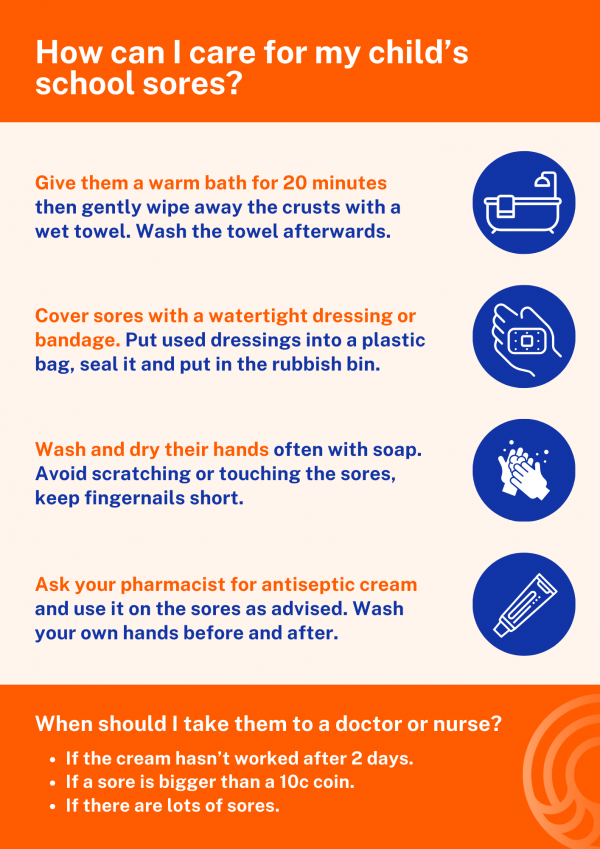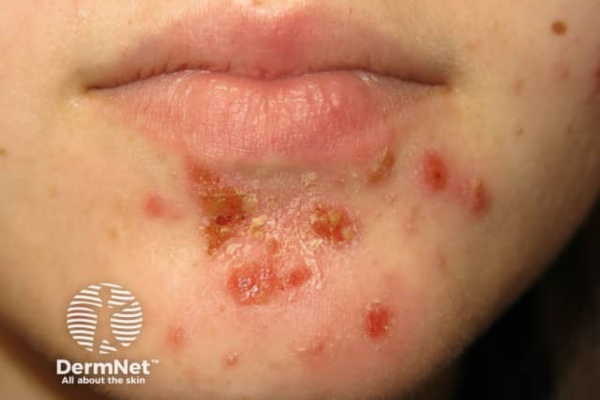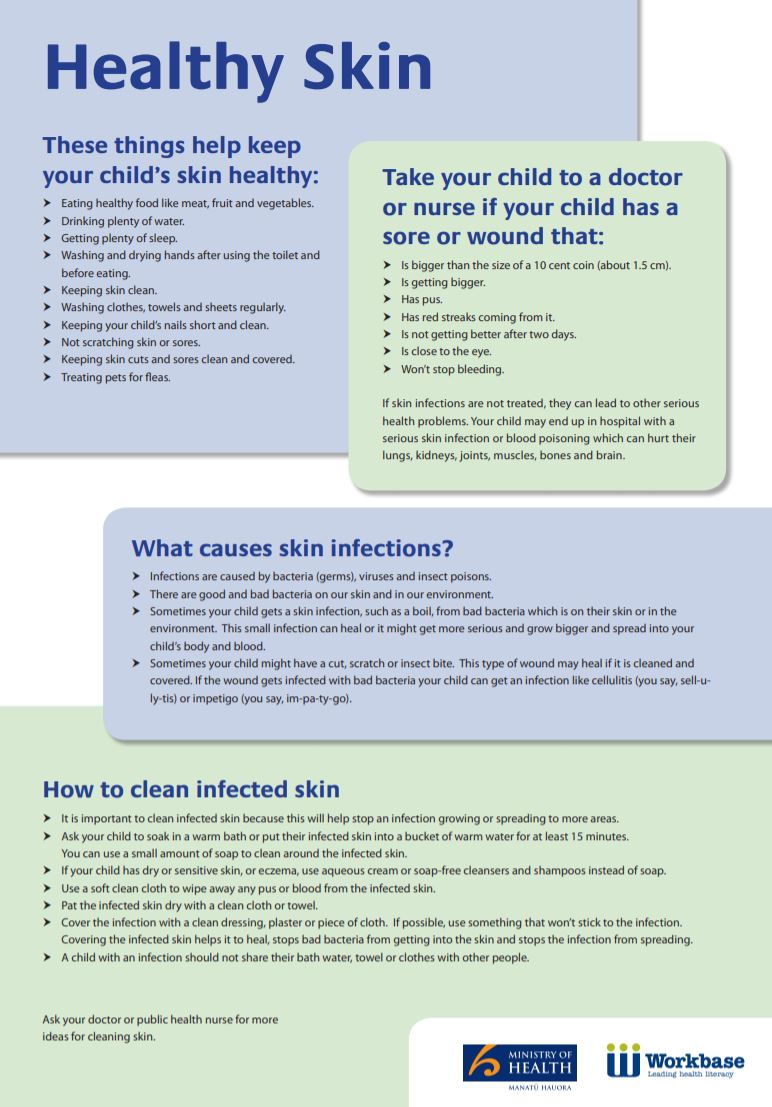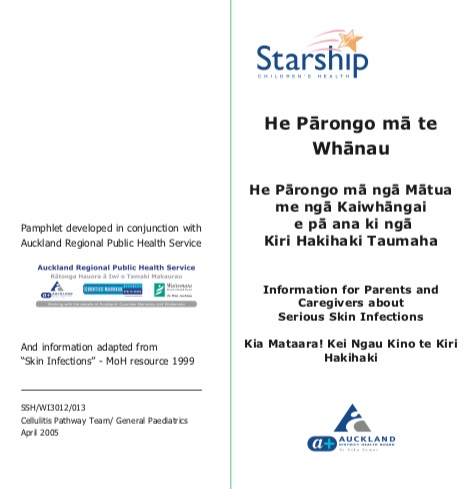
Image credit: Healthify He Puna Waiora
Clean off scabs and crusts
Remove the scab or crusted area by washing with an antiseptic solution, eg, Dettol or Savlon. Follow the instructions on the packaging or ask your pharmacist for advice on how to use them. You can also remove crusts by doing the following:
- Give your child a warm bath for 20 minutes and gently wipe the crusts away with a wet towel. Wash the towel afterwards.
- Make up a mixture of half a cup of white vinegar in a litre of warm water, and lay a cloth soaked in this mix over the sores for about 10 minutes, 3 times a day. Gently wipe off the crusts.
- For more severe cases, your healthcare provider may suggest you do bleach baths(external link).
Keep the sores covered
Keep the sores clean and cover them with a watertight dressing or bandage, to prevent them spreading. Dressings and the correct tapes to hold the dressing in place can be bought from pharmacies. Put used dressings into a plastic bag and seal it before throwing it out.
Try to stop your child from scratching the sores as much as possible. Keep your child's fingernails short to prevent damage and infection from scratching. Make sure your child washes their hands with soap often, especially if they touch the sores.
Antiseptic cream
You can buy antiseptic cream at your pharmacy. Apply it to the affected areas as advised by your pharmacist – usually 2 or 3 times a day. Examples of antiseptics are povidone-iodine, hydrogen peroxide cream or chlorhexidine.
- Before applying the cream, remove the crusted area (see above).
- After applying the antiseptic, cover the sores with a dressing (see above).
- Look carefully in case there are new sores to treat.
- Remember to wash your hands with soap and water before and after applying the cream to your child's skin.










